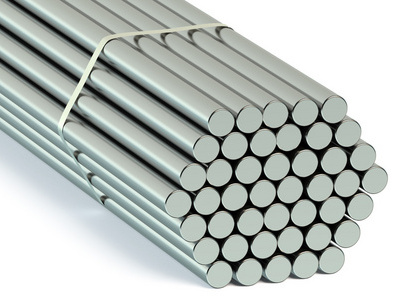Description
1. Introduction to 4J29 materials
4J29 alloy is also called Kovar alloy. The alloy has a linear expansion coefficient similar to that of borosilicate hard glass at 20 to 450°C, a high Curie point, and has good low-temperature tissue stability. The oxide film of the alloy is dense and can be well soaked in glass. It does not work with mercury and is suitable for use in mercury discharge instruments. It is the main sealing structural material of electrical vacuum devices.
Technical Standards for 4J29 Materials YB/T 5231-1993 “Technical Conditions for Iron-nickel Cobalt Glass Seal Alloys 4J29 and 4J44”.
4J29 corresponding grades: Russia 29HК, 29HК-BИ, United States Kovar, Rodar Techallony Glasseal 29-17, Germany Vacon 12
2. Chemical composition of 4J29
Strictly implement the requirements of the United States or national standards
3. 4J29 physical properties
4J29 density 8.5
4J29 resistivity ρ=0.48μΩ·m[1,5].
4J29 Curie point Tc=430℃[1,5].
The magnetic properties of 4J29 alloy are at 4000A/m, the residual magnetic induction strength Br=0.98T, and the coercive force Hc=68.8A/m[1,2].
4J29 elastic modulus E=138GPa.
4. 4J29 organization and smelting method
1) After the structure and structure of 4J29 alloy is treated according to the heat treatment system specified in 1.5, it is then frozen at -78.5℃. Martensite structure should not appear if it is greater than or equal to 4 hours. However, when the alloy composition is not right, different degrees of austenite (γ) will undergo a transformation to acicular martensite (α) at room temperature or low temperature, and the phase change will be accompanied by a volume expansion effect. The expansion coefficient of the alloy increases accordingly, causing the internal stress of the sealing member to increase sharply, and even causing partial damage. The main factor affecting the stability of the alloy’s low-temperature structure is the chemical composition of the alloy. From the Fe-Ni-Co ternary phase diagram, it can be seen that nickel is the main element in the stable gamma phase, and a high nickel content is conducive to the stability of the gamma phase. As the total deformation rate of the alloy increases, its structure tends to be more stable. Alloy composition segregation may also cause γ→α phase change in local areas. In addition, coarse grains will also promote the phase transition of γ→α.
2) The 4J29 grain size standard stipulates that the grain size of deep-drawn strips should not be less than level 7, and grains less than level 7 shall not exceed 10% of the area. When estimating the average grain size of the strip with a thickness of less than 0.13 mm, the number of grains should be no less than 8 along the thickness direction of the strip.
3) The 4J29 smelting and casting process is melted using a non-vacuum induction furnace, a vacuum induction furnace or an arc furnace.
4J29 Application Overview and Special Requirements This alloy is a typical Fe-Ni-Co hard glass sealing alloy that is internationally versatile. After long-term use by aviation factories, the performance is stable. It is mainly used for glass sealing of electrical vacuum components such as emission tubes, oscillation tubes, ignition tubes, magnetrons, transistors, sealing plugs, relays, integrated circuit lead wires, chassis, housings, brackets, etc. In applications, the selected glass should be matched with the expansion coefficient of the alloy. Strictly check its low-temperature tissue stability according to the use temperature. Appropriate heat treatment should be carried out during the processing to ensure that the material has good deep-pull extension properties. When using forging materials, the airtightness should be strictly checked.
5. 4J29 application fields
1. Suitable for use in mercury discharge instruments.
2. Main sealing structural materials used in electrical vacuum devices.

